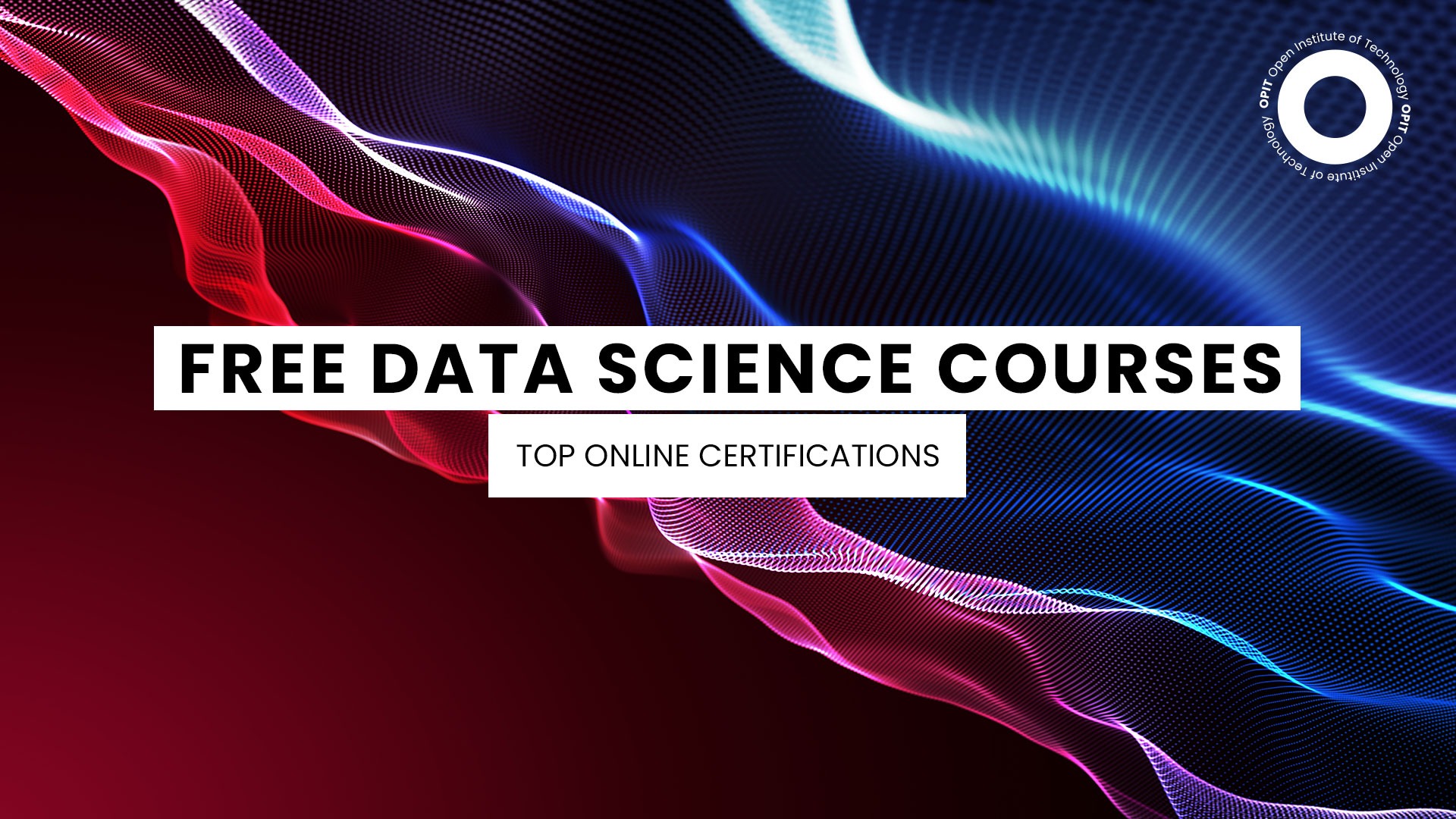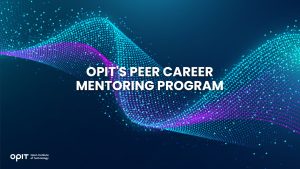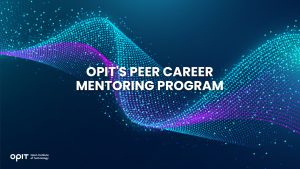

In a world of Big Data, companies need people who have the ability to analyze and reach conclusions from the reams of data they collect about customers. But data science extends far beyond the corporate. Any industry that uses data (i.e., practically all of them) needs data-minded people who can use the latest AI-driven tools to help them scour large datasets.
That’s where you come in. As a potential data scientist, you’ll enter an industry that’s experiencing enormous growth to the point where it will be worth $103 billion (approx. €96.37 billion) by 2027. That market growth translates into demand for talented data scientists, which is already seen today as Coresignal’s data – 8,000 available job postings across eight leading positions in the first five months of 2022 alone – demonstrates.
So, the benefits of earning a free data science certification are obvious – you’re entering a growing industry with huge demand that leads to a better salary. But you need to know which courses will help you break into that industry. This article highlights four of the best free data science courses around.
Top Four Free Data Science Courses
As wonderful as the word “free” may be to budget-conscious students, you still need to know that you’re getting something of value from your data science course. The following options deliver a stellar educational experience and leave you with a qualification that employers recognize.
An Introduction to Data Science (Udemy)
Every journey starts with a first step, and it’s crucial that you take the first step into data science with a course that covers the basics and lays a foundation on which you can build. An Introduction to Data Science does just that by teaching you what data science is and how it applies to the modern world.
That teaching starts with a history lesson that shows how interactions with data (and data collection methods) have evolved over the years. From there, you’ll learn how data science applies in modern industry and discover the difference between actual valuable data and the oodles of “noise” that are in datasets.
It’s a quick and easy course, weighing in at 43 minutes spread across six video lectures, so you don’t have to make a huge time commitment. It’s delivered online by a Google Certified Python Expert named Kumar Rajmani Bapat and is ideal for getting the basics of data science down before you move on to a more intensive or focused course.
But the focus on the basics is also the biggest issue with this course. Rather than showing you the techniques a data scientist uses, the course focuses on what data science is and offers a roadmap for getting into the industry. It’s more about “what” than “how,” which may make the course too rudimentary for people who already have some knowledge of the subject. It’s also worth noting that this isn’t one of those free data science courses with certificate, as you’ll need to pay for an Udemy subscription to get your hands on a certificate of completion. You can still watch the videos and complete the course for free, though.
Introduction to Data Science (SkillUP)
With a similar name to the above Udemy course, you’d be forgiven for assuming that SkillUP’s Introduction to Data Science program teaches the same stuff. Though the course is aimed squarely at beginners, it takes a more in-depth approach that makes it the ideal follow-up to Udemy’s offering.
You start with the basic spiel about what data science is and how it applies to modern industry. But from there, the course tips into actual application by demonstrating some of the best Python programming libraries to use in the field. You’ll also dig deep into the algorithms used in data science, with linear regression analysis, confusion matrices, and logistic regression all getting some time to shine.
Given this higher focus on the skills you’ll need to learn to become a data scientist, the course is longer than Udemy’s offering. It clocks in at seven hours of videos and tutorials, all of which you access online and work through at your own pace. The course also expects you to have a solid grasp of math and programming (some experience with Python is a must) so this isn’t ideal for complete beginners to computer science.
This is a data science free online course with certificate, though there is a caveat. SkillUP only provides 90 days of free access to the course. If you feel it will take longer than that to get through the seven hours of tutorials, you’ll need to enroll in a paid subscription. The best approach here is to only start the course when you’re confident that you can block out the time needed to wrap it up within 90 days.
IBM Data Science Professional Certificate (Coursera)
Aimed squarely at the career-focused individual, IBM’s data science course is all about building the skills that set you on the right path to a career in the field. It takes a more practical approach, starting you off with the fundamentals before pushing you into a project where you’ll work with a real-world dataset and publish a report that’s analyzed by stakeholders simulating what you’ll experience in the working world.
The good news is that you don’t need to know anything about data science to get started with the course. It holds your hand as you learn the basics of what data science is (including what a data scientist actually does) and teaches you about the tools and programming languages you’ll use in the field. Once you have a grasp on the fundamentals, you’ll learn how to analyze and visualize data, in addition to creating machine learning models using Python, before wrapping up with the previously mentioned project.
The IBM Data Science Professional Certificate is a more intensive course than the others on this list. It’s essentially a mini degree, requiring you to invest 10 hours per week for five months into your learning. However, the course is provided entirely online, allowing you to schedule that learning time as you see fit. You’ll work through 10 modules as part of the certificate.
That time commitment may be a downside for those who can’t put 10 hours per week into a course, though that downside is outweighed heavily by the fact that you come out with an IBM certification. Having one of the leading names in computing on your certificate is enough to make any employer sit up and take notice.
Data Analysis With Python (freeCodeCamp)
The Python programming language (along with SQL and a few others) underpins almost everything that the modern data scientist does. Data Analysis with Python takes that concept and runs with it by providing a course that digs into using Python to read, analyze, and visualize data.
Along the way, you’ll learn about the basics of both Python and data analysis, though the real highlight comes from the many libraries and tools the course introduces. You’ll use Seaborn, Numpy, Mayplotlib, and Pandas during the course. All of which are libraries used by professionals to extract and visualize data. The course wraps up with a series of five projects, each testing a different set of skills learned via the modules, with your certification coming after you’ve completed all five.
This is one of those free data science courses that’s entirely self-paced and there are no time constraints or commitments involved. Once you’ve signed up for freeCodeCamp, you can save your progress through the course at any point and return whenever you’re ready. Theoretically, this means you could start the course, save your progress, and then return to it months later, though that isn’t recommended if you want to keep the information fresh in your mind. All told, the course contains 37 modules, plus the five projects required for certification, making it one of the most in-depth Python courses around.
The focus on Python is great for those who are unfamiliar with the language, though it also creates some issues. Namely, this isn’t the right course for those who don’t understand data science fundamentals. It jumps straight into analyzing datasets using Python, so those who don’t really understand what datasets are or how they apply to the modern world should start with a more beginner-oriented course.
Tips for Choosing the Right Data Science Course
You get the same benefit from all of the listed data science online courses – free entry. But each course offers something different. Use these tips to determine which is the right choice for you:
- Assess your current skill level to pick a course that delivers what you need to know right now rather than a course that forces you to run before you can walk.
- Determine your learning goals so you can see how the course fits into your roadmap for becoming a data scientist.
- Consider the course’s format and duration as both will play a huge role in how you schedule your learning around your other commitments, be they work-related or personal.
- Look for courses that offer hands-on project work once you’ve moved beyond learning the basics of data science.
- Read reviews and testimonials from other students to see if people in your position get actual value from the course.
Start Your Journey With Free Data Science Courses Online
Every journey starts with a first step, and that first step could take you into a career that has massive potential for growth if you opt for the data science path. The four courses listed here each offer something different, from exploring the basics of what data science is to digging deep into the programming tools you’ll use to conduct data analysis and visualization. Completing one of the four sets you on the right path, though completing all four gives you a solid grounding (and a set of certifications) that make you immensely attractive to employers.
Related posts

Source:
- Raconteur, published on November 06th, 2025
Many firms have conducted successful Artificial Intelligence (AI) pilot projects, but scaling them across departments and workflows remains a challenge. Inference costs, data silos, talent gaps and poor alignment with business strategy are just some of the issues that leave organisations trapped in pilot purgatory. This inability to scale successful experiments means AI’s potential for improving enterprise efficiency, decision-making and innovation isn’t fully realised. So what’s the solution?
Although it’s not a magic bullet, an AI operating model is really the foundation for scaling pilot projects up to enterprise-wide deployments. Essentially it’s a structured framework that defines how the organisation develops, deploys and governs AI. By bringing together infrastructure, data, people, and governance in a flexible and secure way, it ensures that AI delivers value at scale while remaining ethical and compliant.
“A successful AI proof-of-concept is like building a single race car that can go fast,” says Professor Yu Xiong, chair of business analytics at the UK-based Surrey Business School. “An efficient AI technology operations model, however, is the entire system – the processes, tools, and team structures – for continuously manufacturing, maintaining, and safely operating an entire fleet of cars.”
But while the importance of this framework is clear, how should enterprises establish and embed it?
“It begins with a clear strategy that defines objectives, desired outcomes, and measurable success criteria, such as model performance, bias detection, and regulatory compliance metrics,” says Professor Azadeh Haratiannezhadi, co-founder of generative AI company Taktify and professor of generative AI in cybersecurity at OPIT – the Open Institute of Technology.
Platforms, tools and MLOps pipelines that enable models to be deployed, monitored and scaled in a safe and efficient way are also essential in practical terms.
“Tools and infrastructure must also be selected with transparency, cost, and governance in mind,” says Efrain Ruh, continental chief technology officer for Europe at Digitate. “Crucially, organisations need to continuously monitor the evolving AI landscape and adapt their models to new capabilities and market offerings.”
An open approach
The most effective AI operating models are also founded on openness, interoperability and modularity. Open source platforms and tools provide greater control over data, deployment environments and costs, for example. These characteristics can help enterprises to avoid vendor lock-in, successfully align AI to business culture and values, and embed it safely into cross-department workflows.
“Modularity and platformisation…avoids building isolated ‘silos’ for each project,” explains professor Xiong. “Instead, it provides a shared, reusable ‘AI platform’ that integrates toolchains for data preparation, model training, deployment, monitoring, and retraining. This drastically improves efficiency and reduces the cost of redundant work.”
A strong data strategy is equally vital for ensuring high-quality performance and reducing bias. Ideally, the AI operating model should be cloud and LLM agnostic too.
“This allows organisations to coordinate and orchestrate AI agents from various sources, whether that’s internal or 3rd party,” says Babak Hodjat, global chief technology officer of AI at Cognizant. “The interoperability also means businesses can adopt an agile iterative process for AI projects that is guided by measuring efficiency, productivity, and quality gains, while guaranteeing trust and safety are built into all elements of design and implementation.”
A robust AI operating model should feature clear objectives for compliance, security and data privacy, as well as accountability structures. Richard Corbridge, chief information officer of Segro, advises organisations to: “Start small with well-scoped pilots that solve real pain points, then bake in repeatable patterns, data contracts, test harnesses, explainability checks and rollback plans, so learning can be scaled without multiplying risk. If you don’t codify how models are approved, deployed, monitored and retired, you won’t get past pilot purgatory.”
Of course, technology alone can’t drive successful AI adoption at scale: the right skills and culture are also essential for embedding AI across the enterprise.
“Multidisciplinary teams that combine technical expertise in AI, security, and governance with deep business knowledge create a foundation for sustainable adoption,” says Professor Haratiannezhadi. “Ongoing training ensures staff acquire advanced AI skills while understanding associated risks and responsibilities.”
Ultimately, an AI operating model is the playbook that enables an enterprise to use AI responsibly and effectively at scale. By drawing together governance, technological infrastructure, cultural change and open collaboration, it supports the shift from isolated experiments to the kind of sustainable AI capability that can drive competitive advantage.
In other words, it’s the foundation for turning ambition into reality, and finally escaping pilot purgatory for good.

The Open Institute of Technology (OPIT) is the perfect place for those looking to master the core skills and gain the fundamental knowledge they need to enter the exciting and dynamic environment of the tech industry. While OPIT’s various degrees and courses unlock the doors to numerous careers, students may not know exactly which line of work they wish to enter, or how, exactly, to take the next steps.
That’s why, as well as providing exceptional online education in fields like Responsible AI, Computer Science, and Digital Business, OPIT also offers an array of career-related services, like the Peer Career Mentoring Program. Designed to provide the expert advice and support students need, this program helps students and alumni gain inspiration and insight to map out their future careers.
Introducing the OPIT Peer Career Mentoring Program
As the name implies, OPIT’s Peer Career Mentoring Program is about connecting students and alumni with experienced peers to provide insights, guidance, and mentorship and support their next steps on both a personal and professional level.
It provides a highly supportive and empowering space in which current and former learners can receive career-related advice and guidance, harnessing the rich and varied experiences of the OPIT community to accelerate growth and development.
Meet the Mentors
Plenty of experienced, expert mentors have already signed up to play their part in the Peer Career Mentoring Program at OPIT. They include managers, analysts, researchers, and more, all ready and eager to share the benefits of their experience and their unique perspectives on the tech industry, careers in tech, and the educational experience at OPIT.
Examples include:
- Marco Lorenzi: Having graduated from the MSc in Applied Data Science and AI program at OPIT, Marco has since progressed to a role as a Prompt Engineer at RWS Group and is passionate about supporting younger learners as they take their first steps into the workforce or seek career evolution.
- Antonio Amendolagine: Antonio graduated from the OPIT MSc in Applied Data Science and AI and currently works as a Product Marketing and CRM Manager with MER MEC SpA, focusing on international B2B businesses. Like other mentors in the program, he enjoys helping students feel more confident about achieving their future aims.
- Asya Mantovani: Asya took the MSc in Responsible AI program at OPIT before taking the next steps in her career as a Software Engineer with Accenture, one of the largest IT companies in the world, and a trusted partner of the institute. With a firm belief in knowledge-sharing and mutual support, she’s eager to help students progress and succeed.
The Value of the Peer Mentoring Program
The OPIT Peer Career Mentoring Program is an invaluable source of support, inspiration, motivation, and guidance for the many students and graduates of OPIT who feel the need for a helping hand or guiding light to help them find the way or make the right decisions moving forward. It’s a program built around the sharing of wisdom, skills, and insights, designed to empower all who take part.
Every student is different. Some have very clear, fixed, and firm objectives in mind for their futures. Others may have a slightly more vague outline of where they want to go and what they want to do. Others live more in the moment, focusing purely on the here and now, but not thinking too far ahead. All of these different types of people may need guidance and support from time to time, and peer mentoring provides that.
This program is also just one of many ways in which OPIT bridges the gaps between learners around the world, creating a whole community of students and educators, linked together by their shared passions for technology and development. So, even though you may study remotely at OPIT, you never need to feel alone or isolated from your peers.
Additional Career Services Offered by OPIT
The Peer Career Mentoring Program is just one part of the larger array of career services that students enjoy at the Open Institute of Technology.
- Career Coaching and Support: Students can schedule one-to-one sessions with the institute’s experts to receive insightful feedback, flexibly customized to their exact needs and situation. They can request resume audits, hone their interview skills, and develop action plans for the future, all with the help of experienced, expert coaches.
- Resource Hub: Maybe you need help differentiating between various career paths, or seeing where your degree might take you. Or you need a bit of assistance in handling the challenges of the job-hunting process. Either way, the OPIT Resource Hub contains the in-depth guides you need to get ahead and gain practical skills to confidently move forward.
- Career Events: Regularly, OPIT hosts online career event sessions with industry experts and leaders as guest speakers about the topics that most interest today’s tech students and graduates. You can join workshops to sharpen your skills and become a better prospect in the job market, or just listen to the lessons and insights of the pros.
- Internship Opportunities: There are few better ways to begin your professional journey than an internship at a top-tier company. OPIT unlocks the doors to numerous internship roles with trusted institute partners, as well as additional professional and project opportunities where you can get hands-on work experience at a high level.
In addition to the above, OPIT also teams up with an array of leading organizations around the world, including some of the biggest names, including AWS, Accenture, and Hype. Through this network of trust, OPIT facilitates students’ steps into the world of work.
Start Your Study Journey Today
As well as the Peer Career Mentoring Program, OPIT provides numerous other exciting advantages for those who enroll, including progressive assessments, round-the-clock support, affordable rates, and a team of international professors from top universities with real-world experience in technology. In short, it’s the perfect place to push forward and get the knowledge you need to succeed.
So, if you’re eager to become a tech leader of tomorrow, learn more about OPIT today.
Have questions?
Visit our FAQ page or get in touch with us!
Write us at +39 335 576 0263
Get in touch at hello@opit.com
Talk to one of our Study Advisors
We are international
We can speak in:


